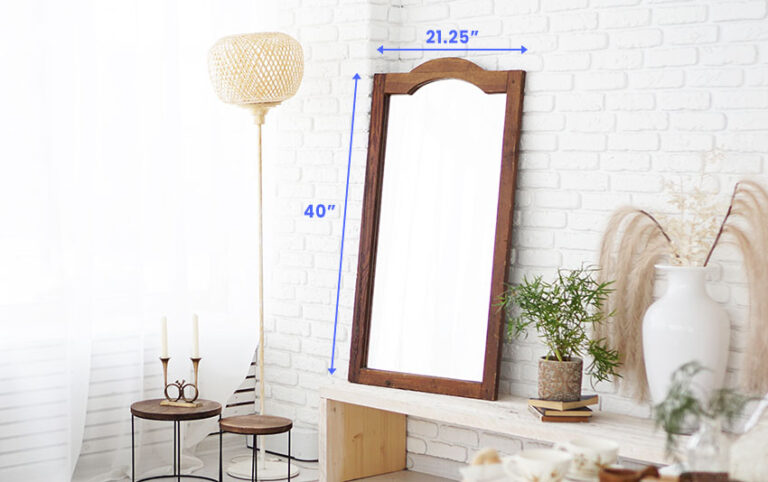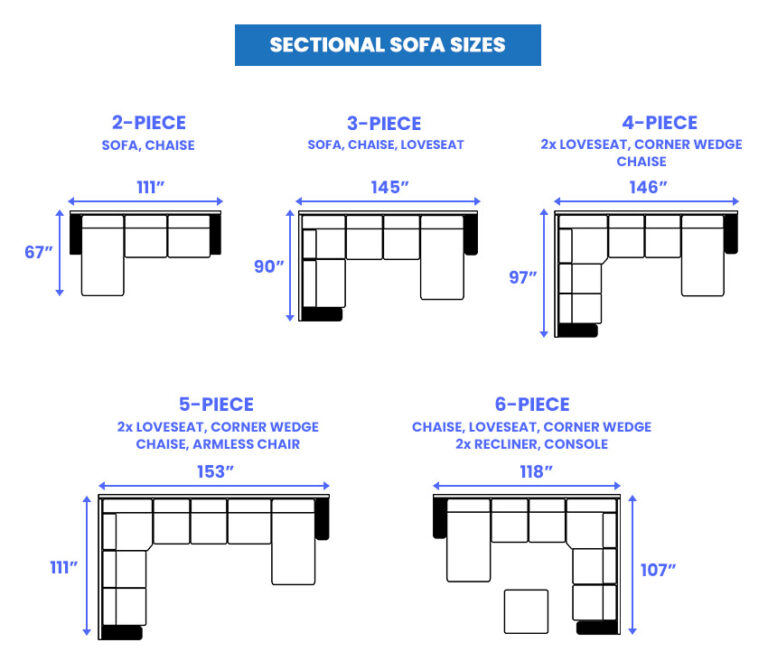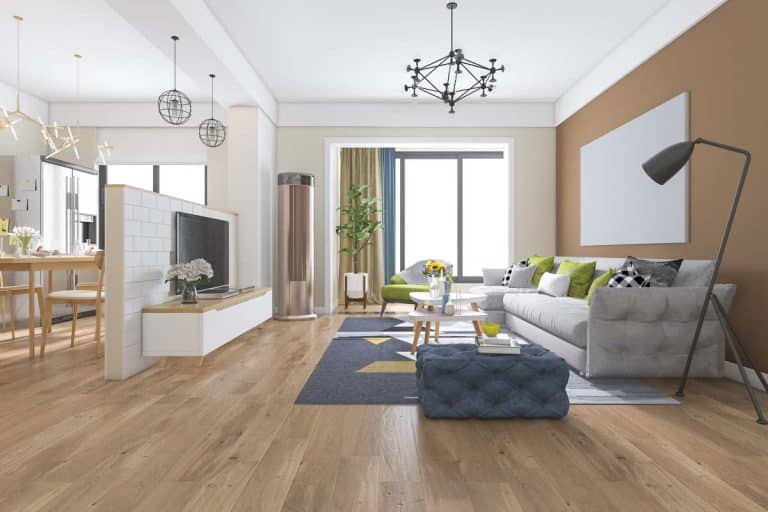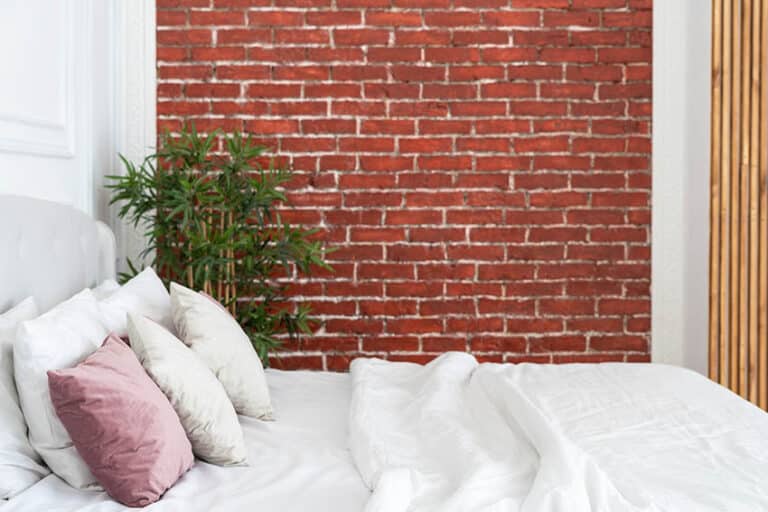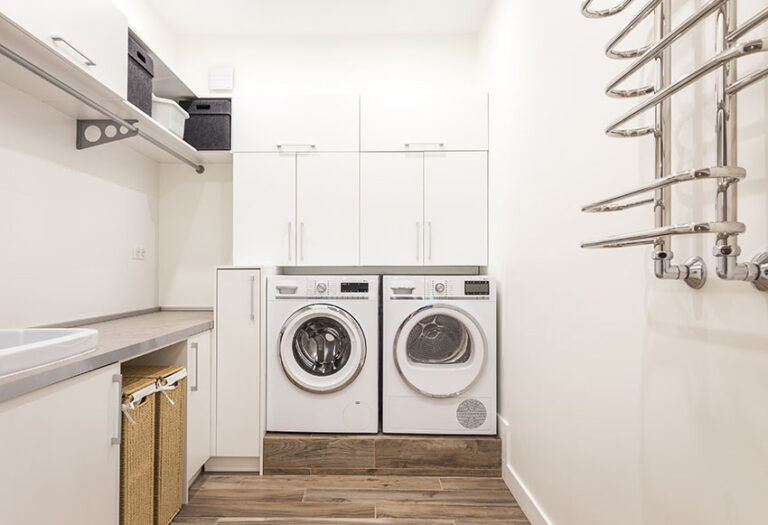What to Know if Considering a Gas Fireplace for the Home
As fireplaces become integral to the house, many homeowners look for better alternatives to a traditional wood burning fireplace. One of the best options in the market is a gas fireplace, which can provide enough warmth and give a cozy ambiance to a home, minus all the work involved in operating and maintaining a wood-burning model.
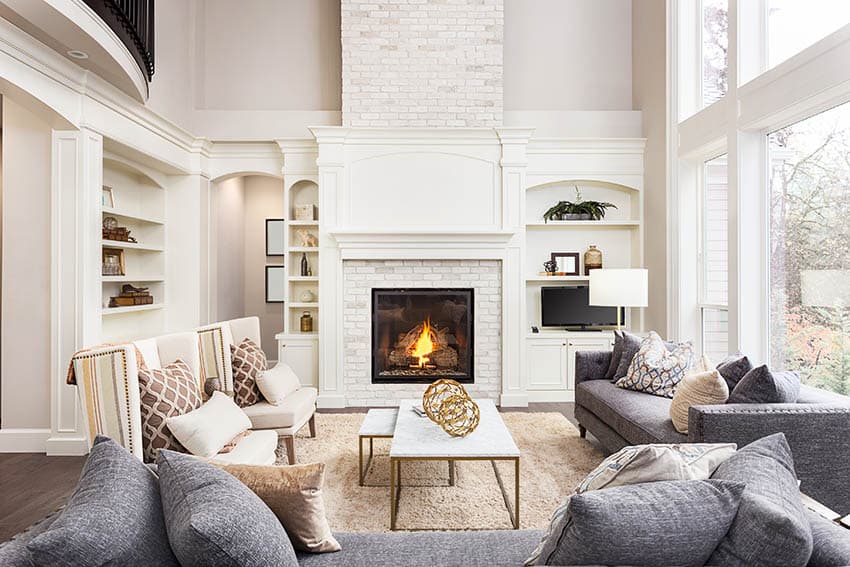
Below, we give you our ultimate guide to gas fireplaces with everything you need to know about their types, installation, cost, maintenance, and features. Our guide also comes with design ideas that you can get inspiration from in building your own gas fireplace. Read on to know why gas fireplaces make a worthy investment for your home.
What Is a Gas Fireplace?
Gas fireplaces use natural gas to produce heat, unlike traditional fireplaces, which burn wood. They are built into the wall and come in a variety of styles. Gas fireplaces come in different types, namely gas fireplace inserts and gas fireplace logs.
Advantages of a Gas-Type Fireplace
Here are some of the general advantages of installing a gas fireplace
- Constant Heat. Gas fireplaces provide a more efficient source of heat and maximize the warmth supplied to a house. The heat that you can get from it is more constant than that of a wood-burning fireplace. As long as it is connected to a gas line, it can give you heat.
- Energy saving and efficient. Gas fireplaces are very energy efficient and can help you save 25% of your energy and heating bills. It also costs less to run compared to other alternatives.
- Easy and convenient to use. With gas fireplaces, you get the warmth and comfort of heating with just a push of a button. It is much easier than operating wood burning fireplaces which require you to haul wood, or change the logs to keep it working.
- Safe to use. Gas fireplaces provide cleaner heat because they emit no smoke. It does not produce fumes or particles which can be harmful to one’s health.
- Low maintenance. Gas fireplaces are easy to use and require little maintenance. Gas fireplaces do not produce soot, debris or ash, so there is little cleaning needed to keep it in good shape.
- Gives a homey, cozy, and inviting feel to a home. Gas fireplaces can help improve the coziness and ambiance of a space.
Types of Gas Fireplaces
Here are the most popular types of fireplaces:
Fireplace Insert

A gas fireplace insert is an “insert” that is placed into an existing masonry fireplace or an opening hearth to convert and upgrade to a gas fireplace. Gas inserts sit inside a metal box that is contained within a larger metal box. This box is retrofitted into an existing fireplace to generate radiant heat and a steady stream of warm air. Basically, it is a “log and burner” set.
The inserts produce heat by warming the room air in the gap between the boxes. The heat produced is then radiated from the firebox. It uses a chimney to run the venting out of the home.
The inserts come in vented versions , which typically have a fixed glass panel in front of the flames, or ventless models with fixed metal screens.
Benefits of a Gas Fireplace Insert. Gas fireplace inserts are typically used to upgrade an existing fireplace, preserve a chimney or to improve a home’s heating.
It is more efficient and convenient compared to a traditional wood burning fireplace. Inserts are also very reliable heat producers and can keep your home warm when needed.
Fireplace with Ceramic Logs
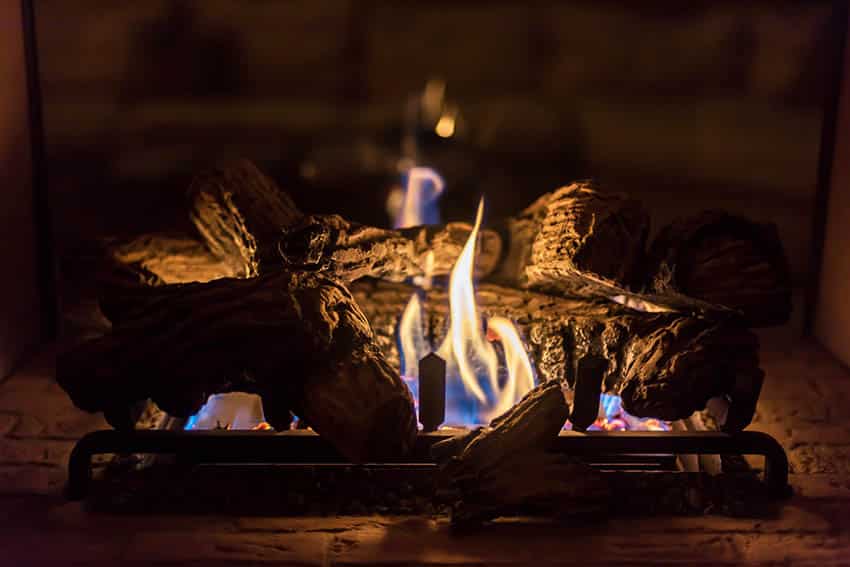
The logs are a stack of ceramic logs that sit in existing open fireplaces. They come with a gas burner — so basically, they are a “log and burner” set, but the logs are incombustible. Gas fireplace logs can either be vented or ventless.
Vented gas logs vent up an existing chimney, whereas vent free gas logs do not require a chimney and exhaust all the heat into the house. With the vented gas fireplace logs, the damper is propped open at all times to prevent CO from building up and to make sure that the heat goes up the flue.
Gas fireplace logs are more for looks than warmth. While they emit heat, they do not discharge as much heat as the insert. Similar to a wood burning fireplace, most of the heat generated from gas log sets goes up the chimney.
Benefits of a Gas Fireplace Logs. If you want something that will improve the aesthetics of your fireplace, gas logs are your best bet.
They are a more decorative option compared to burning wood. When it comes to cost, gas fireplace logs are less expensive compared to inserts, which makes it a perfect choice for homeowners with a limited budget.
Types Of Fireplace Gas Vent Systems
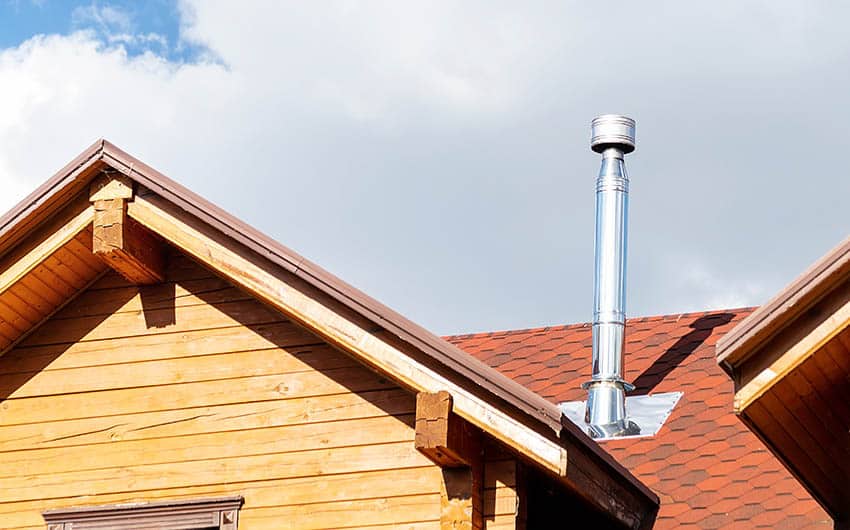
Gas fireplaces can be divided into three main categories: vented, direct vent, and vent-free. With each gas vent system, you have a choice between fireplaces that vent the gas and fumes outside or vent-free versions that dispel heat into the house.
While each gas vent system has its own benefits, choosing the best one will ultimately depend on one’s preference and the house’s existing conditions.
Direct Vent Fireplace
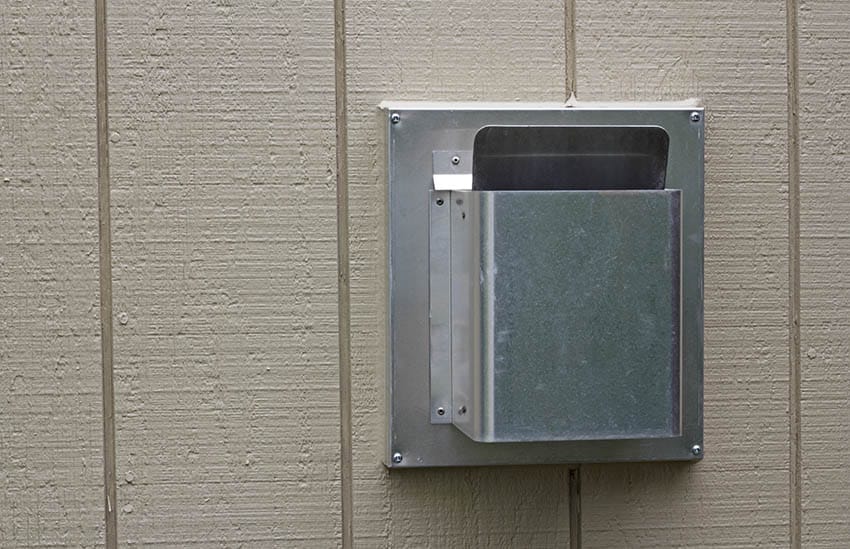
Direct vent gas fireplaces vent directly to the outdoors. This type of gas vent system takes in air from the outside, uses it for combustion and discharges the emissions back outside using a dual vent system.
During installation, direct vent fireplaces need to be placed on an exterior wall — simply because they directly vent to the outdoors.
They require a glass door to ensure that they work properly. Design-wise, direct vent fireplaces resemble the look of traditional fireplaces the most, as compared to other types.
How it works: This is typically constructed using a two-layer pipe that directly connects to the unit and the exterior of the house.
The pipes serve dual purposes: (1) to draw air in from the outside and (2) to expel the flame’s fumes and gas directly outdoors.
Benefits of a direct vent fireplace: Direct vent fireplaces are considered to be some of the safest systems because they do not allow carbon monoxide to enter the home and it ensures that all the waste and fumes flow outside.
In addition, it helps keep the air quality in your home healthy. Direct vent fireplaces can also be used without electricity.
Vented Gas
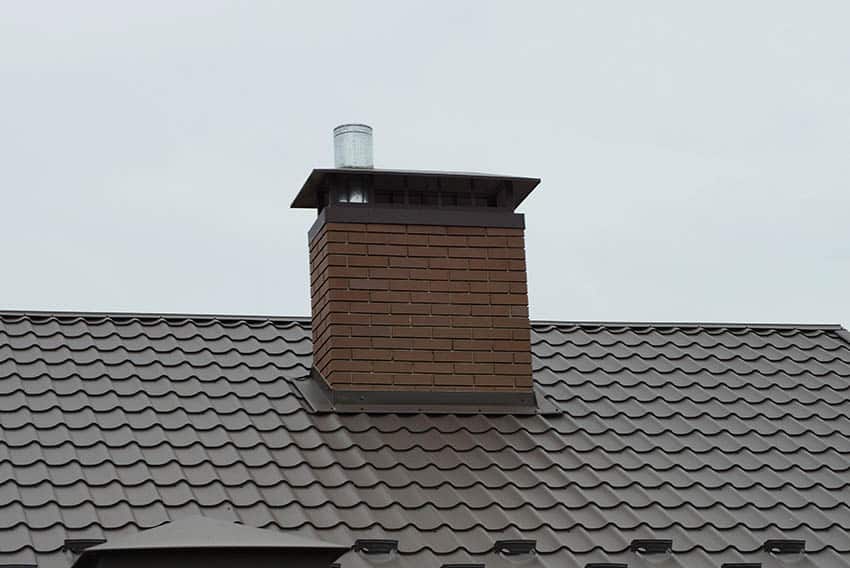
As its name suggests, a vented gas fireplace requires a vent where the gases produced from the firebox can travel up and out of the house.
It is constructed much like a traditional wood-burning hearth, which is vented through a chimney. The use of a chimney prevents any smoke from flowing back into the house.
Vented gas fireplaces are typically used when you want to convert existing fireplaces from wood to gas. It is also the best option to use if you have an existing chimney at home. Just like a direct vent gas fireplace, it can be used without electricity.
How it works: Air is pulled from within the home for combustion, comes in through the chimney and the emissions are expelled outside through the same ventilation system.
Benefits of a vented gas fireplace: With vented gas fireplaces, you have a variety of choices when it comes to burning elements. You can use ceramic logs, artificial logs which mimic the appearance of real wood. In addition, it provides the easiest way to convert an existing fireplace from wood to gas.
Disadvantages of vented gas fireplace: One downside to vented gas fireplaces is it has lower efficiency compared to its ventless counterparts because heat can get out of the vent.
Ventless Fireplace
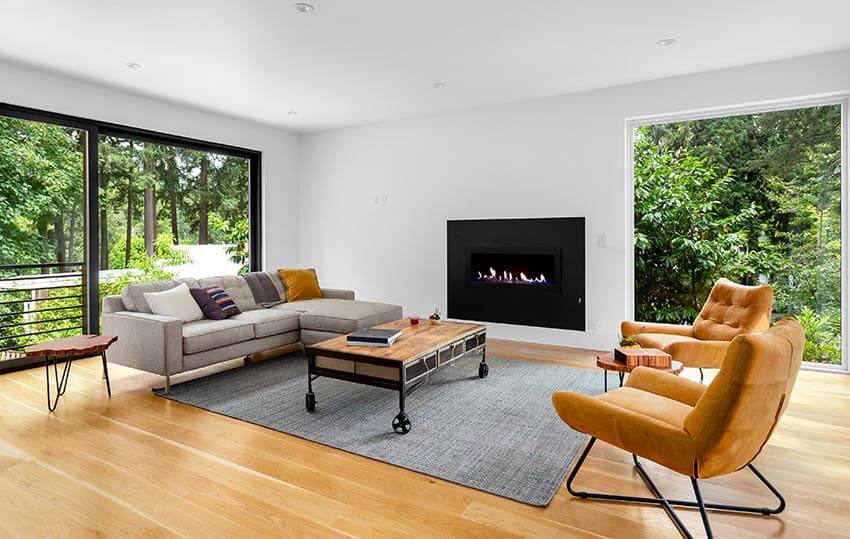
While direct vent gas fireplaces need to be constructed in an exterior wall, vent free gas fireplaces can be literally put anywhere in a home — from interior walls, to exterior walls, upstairs or downstairs, the corner of a room or even the middle of it.
This makes it very easy to work with because you can enjoy the freedom of being able to design and install it anywhere in your home to fit its design.
Ventless gas fireplaces cannot be used without electricity because they have sensors and automatic shut off valves.
How it works: Uses air from within the home and releases the emissions within the home. Does not use a duct or a chimney, but instead uses a catalytic converter to clean the air.
Benefits of a ventless gas fireplace: In addition to its design flexibility, ventless gas fireplaces offer maximum warmth. Because there is no exterior vent, no heat is lost outside.
Disadvantages of ventless gas fireplace: One of the downsides to ventless gas fireplaces is the increased risk of poor air quality in the home which can lead to potential health risks. Another disadvantage is its high price. Appearance-wise, the lack of venting can lead to a less realistic looking flame, which can in turn lessen your fireplace’s visual appeal.
Vented Vs Ventless Style Fireplace
Aside from the configuration, there are other aspects which make ventless gas fireplaces different from vented gas fireplaces.
Their most significant difference is that ventless gas fireplaces are more energy efficient compared to vented gas fireplaces. Because no heat escapes up the flue or chimney, the warmth coming from the fire is most likely to stay in your space.
Vented gas fireplaces also use up more gas to keep constant heat. With such, you are more likely to save on gas utility bills.
Features of Fireplaces That Use Gas
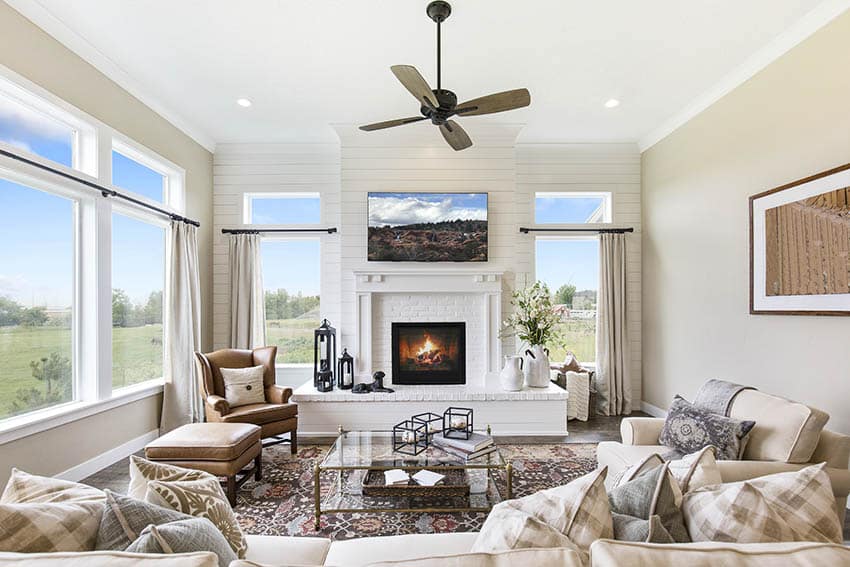
Gas fireplaces include special features that can’t be found in traditional wood-burning models. These features enable them to perform better, making them easier to use and more energy efficient.
Electronic Ignition
An electronic ignition provides a much simpler way to start the flames in your fireplace. Also known as a non- standing pilot, this feature eliminates the use of matches or a lighter to ignite or start a fire in your fireplace.
With an electric ignition upgrade, you can adjust the settings easily using a wall switch, a remote control, or a timer. So with just a push of a button, you have the flexibility to turn the unit on or off, adjust the flame’s height, and control your unit anywhere in your home.
An electronic ignition requires a battery-operated connection or a power line installation. Routing your unit to a power line typically costs more because of the additional parts, wiring, and electrical work.
On the other hand, a battery-operated connection is cheaper and much easier to install but will require you to replace the batteries over time.
An electronic ignition is better than a match-lit and a standing pilot ignition system because it is not only convenient, hassle-free, and easy to operate, but it is also safer to use.
Electronic ignition systems come with a flame-sensing pilot feature. This special feature is activated when in use, and when there are no flames detected, the electronic ignition system automatically shuts off the gas flow and attempts to reignite the flame.
The only downside to an electronic ignition system is it costs more to install than a match-lit or a standing pilot ignition system, but otherwise, it proves to be a very worthy investment for a gas fireplace.
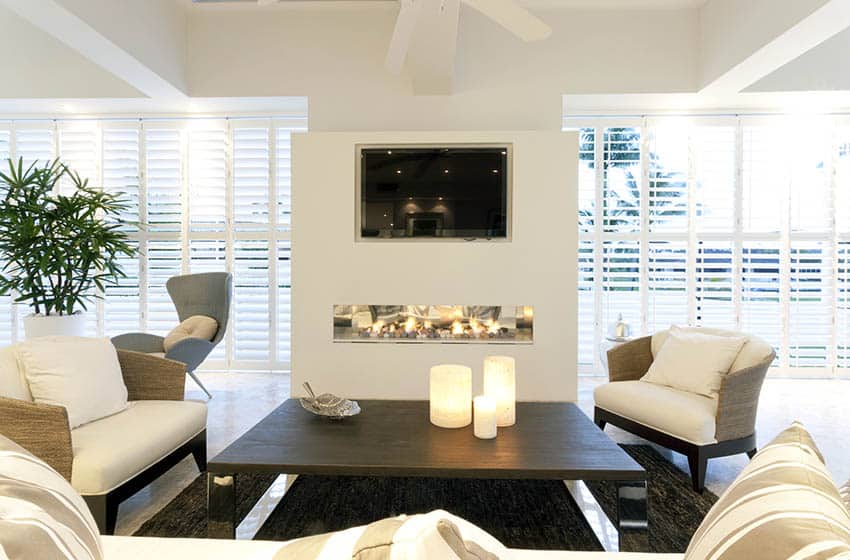
Turndown Range and Turndown Ratio
By definition, the turn down ratio compares the maximum heat output to the minimum heat output within which a burner will operate. It indicates the minimum output a fireplace can handle before turning off then cycling on and off frequently. The turndown ratio varies depending on how a burner is designed.
Gas fireplaces typically have a turndown ratio of 25:1, meaning its burner can modulate from 25% to 100% of full fire or load. There are, however, some flexible models that can adjust down their full heat output to 20%.
For example, a 30,000 Btu/h gas fireplace that has a 20:1 turn down ratio, will allow the user to consume energy at a turndown rate of as low as 6,000 Btu/h.
When looking for a gas fireplace, choose a model that has a wide turndown range because they are more efficient. If you have a gas fireplace and only need to use around half of its capacity, this means you’ll spend less to keep it running.
Heat Distribution
Gas fireplaces have a wide range of heat outputs. Typically, heat distribution can go from about 7,000 to 60,000 Btus.
For a house that is well insulated and has tight windows, a 40,000 BTU fireplace would be more than enough to distribute heat to a large living room or family room.
Automatic Thermostat
Most gas fireplaces feature automatic thermostat that controls the real time temperature and humidity of the fireplace. It automatically turns on, turns off and adjusts the gas fireplaces firing rate when a specified temperature or humidity range has been reached. It is also sometimes called a programmable thermostat, humidity and temperature receiver.
An automatic thermostat is very useful in terms of keeping the room temperature at a constant level. Nowadays, you can easily upgrade an existing one with an automatic thermostat as most of these products are widely available online.
Pilot Light
A pilot light is a small flame that is kept lit in a gas fireplace and other gas fired appliances. Its main purpose is to provide ignition when gas is released to the main burner in order to turn on your appliance and create heat.
Old gas fireplaces also rely on standing pilot lights to ensure that the burner ignites. A pilot light is usually blue in color, but sometimes it burns yellow or orange.
Many gas fireplaces have a standing pilot light that burns even when you aren’t using your fireplace. This makes it much quicker to start a fire when the weather is very cold.
However, most homeowners prefer not to keep them on during warm months in order to conserve gas. It is important to remember that as long as your pilot light is active, it always consumes some gas, which can translate to added operating costs of a gas fireplace.
What Is a Fireplace Blower
A fireplace blower can be added to most vented or ventless gas fireplaces. Gas fireplaces use blowers to heat up cold air from your home and heat it up into warm air before driving it out into the room through front vents.
The main benefit of having a gas blower is improved efficiency. Typically, some heat coming from the fire is lost out of the chimney, but with a blower, the warm air is efficiently expelled into your home. As a result, blowers help produce more heat.
Gas blower kits are readily available in the market. When buying one for your gas fireplace, make sure to get a model that is designed for your fireplace.
However, if the specific model you need is unavailable, you can also try using a universal blower kit, as it works equally the same as an original. On average, it costs around $100 to install a blower and fan in a gas fireplace.
Most blowers have features like fan speed adjustment, which allow you to balance the blower speed and reduce the noise level. It usually takes about 10 to 20 minutes for a blower to turn on.
Accessories to Add to Your Fireplace
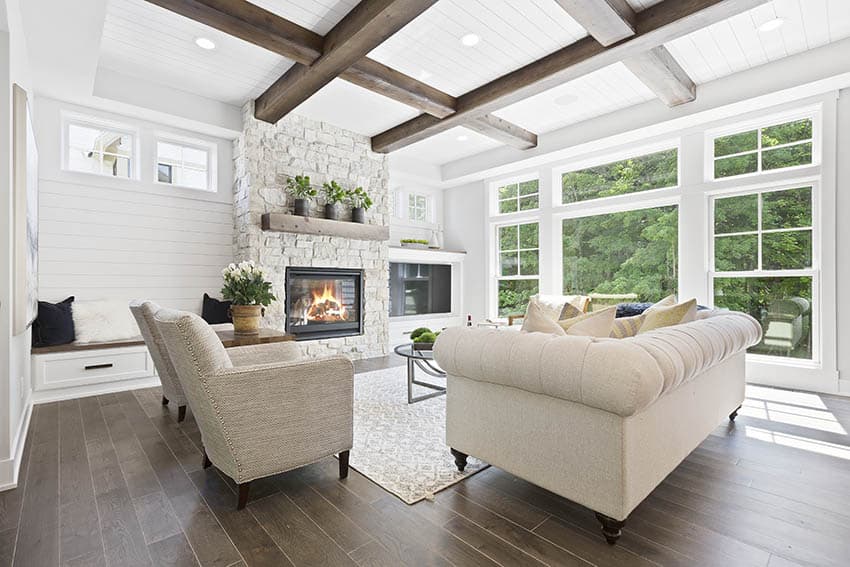
Several accessories help enhance the design and the look of a gas fireplace. Most of these accessories serve not only an aesthetic purpose but also help your gas fireplace perform better. Here is a look at the most common accessories:
What Are Fireplace Mantels
A mantel, sometimes referred to as a mantelpiece, frames the opening of the fireplace and enhances its appearance. Aside from visual aesthetics, it also serves a functional purpose — which is to prevent smoke from entering the room and divert it back into the chimney.
Mantels can be made from many materials, like wood or stone, and they typically add around $500 to $5,000 to the cost of the installation. The mantelpiece design that you choose will ultimately depend on the existing style of your home and your taste.
Design options may be endless, but make sure to pick a mantelpiece that will suit your home’s style — whether it may be traditional, transitional, modern, or contemporary. It will also tie the decor of your room together, so put extra thought into its design, finish, color, and material.
Fireplace Surround Materials
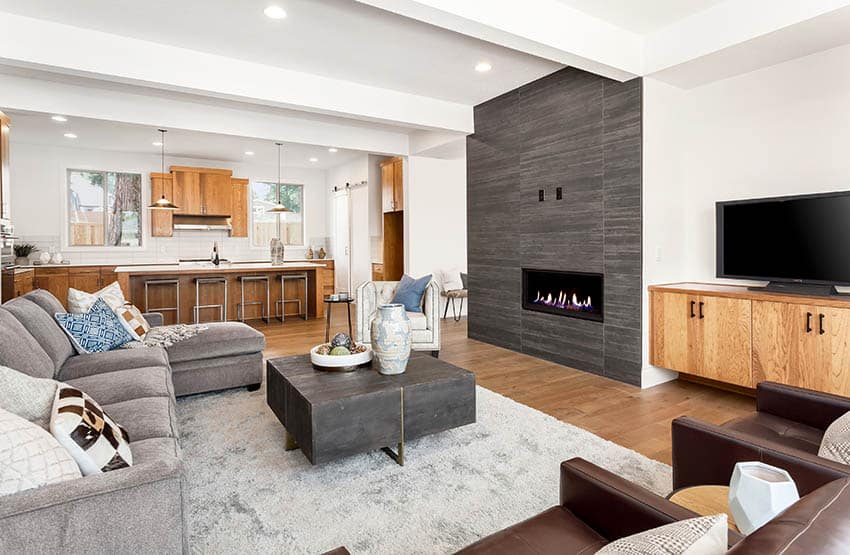
Similar to a mantel, the surround is a decorative piece that is placed on the wall to surround your fireplace opening. The surround adds more character to your gas fireplace and makes it more appealing. Adding one to a gas fireplace can instantly transform it into a stunning focal point of a room.
Gas fireplace surrounds come in an extensive range of styles, sizes, and materials, making an attractive focal point in your room. There are several materials that you can choose from when designing it — from natural stones like marble, granite, travertine, limestone, and slate, to ceramic tiles and porcelain tiles.
Another material is brick, one of the most common materials used in traditional surrounds. Other options include wood and paint.
The simplest finishing treatment for a surround is paint. If you consider using it, make sure that the paint you use is an interior latex paint that is heat resistant. You can opt for either gloss, semi gloss or flat finish, depending on the look you want to achieve.
The cost of adding a surround will depend on the material used. Adding a tile surround to an existing gas fireplace is an affordable option as it only costs around $20 to $35 per square foot installed for the ceramic type. Natural stone has a bit higher price range at $25 to $40 per square foot installed.
Fireplace Hearth
The hearth is the part of the fireplace where the fire burns. It is found underneath the mantel and is typically made of non combustible masonry materials like bricks, stone, tiles or concrete.
If the fireplace has doors that open and expose the flames to open air, the hearth must project to a clear space of at least 36 inches in front of the fireplace. At the same time, modern gas fireplaces that have sealed fronts or a fixed glass front do not require a hearth extension.
Some direct vent gas models also require a much less hearth space depending on the manufacturer’s recommendations.
Recommendations for constructing the hearth must be followed exactly because they help prevent injuries and fire hazards.
Furnace Enclosures, Doors and Screens
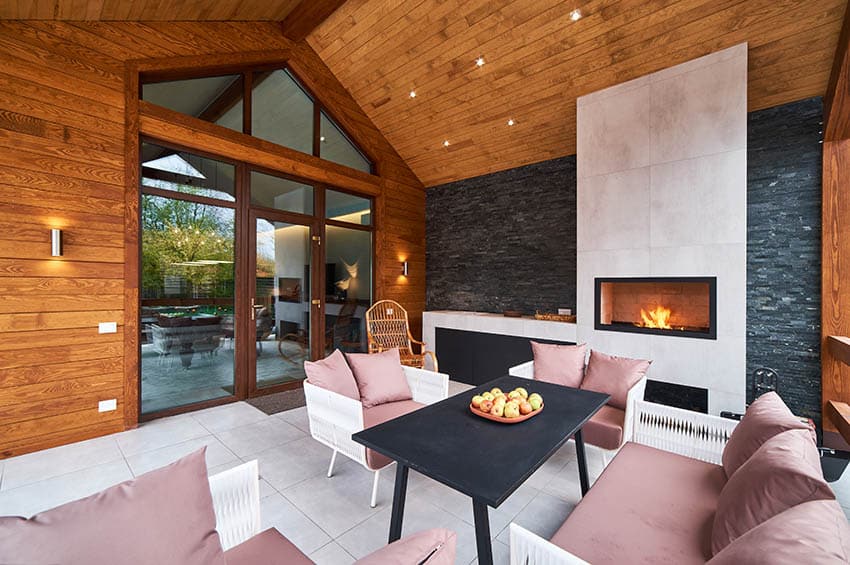
The majority of gas fireplaces have glass doors, which help give the fireplace a more “finished” look. Aside from the added visual aesthetic, glass doors help the fire burn better. By enclosing a fireplace, the fire burns more and produces more heat. Compared to a gas fireplace with no doors, an enclosed one will absorb and radiate the heat into a room far better.
The glass used for doors and enclosures comes in a lot of styles and finishes and may be customized in any size. Adding a glass door usually costs around $300 to $500, depending on the size and style. When choosing the right door, make sure to opt for a design that will complement the hearth, mantel, and surround of your gas fireplace.
Lava Rocks
Lava rocks are a type of fire media suitable for use in indoor or outdoor propane or natural gas fireplaces and fire pits. It is a porous, light , dry or moisture free naturally occurring rock that absorbs heat. Because it is a very good conductor of heat, it is an efficient medium to increase combustion.
Lava rocks not only help with efficiency but also give a gas fireplace a more rugged look. They come in a variety of size and colors and are practically maintenance free.
However, to ensure that they last, it is recommended that lava rocks must be removed and rinsed off with clean water, at least once a year. In a gas fireplace, the lava rocks may be added before or after the logs are placed. They can be used as a base for the fireplace or a filler around the burner pan. Typically, a depth of 2 to 4 inches is the recommended amount of lava rocks for most gas fireplaces.
Standard Dimensions for Gas Fireboxes
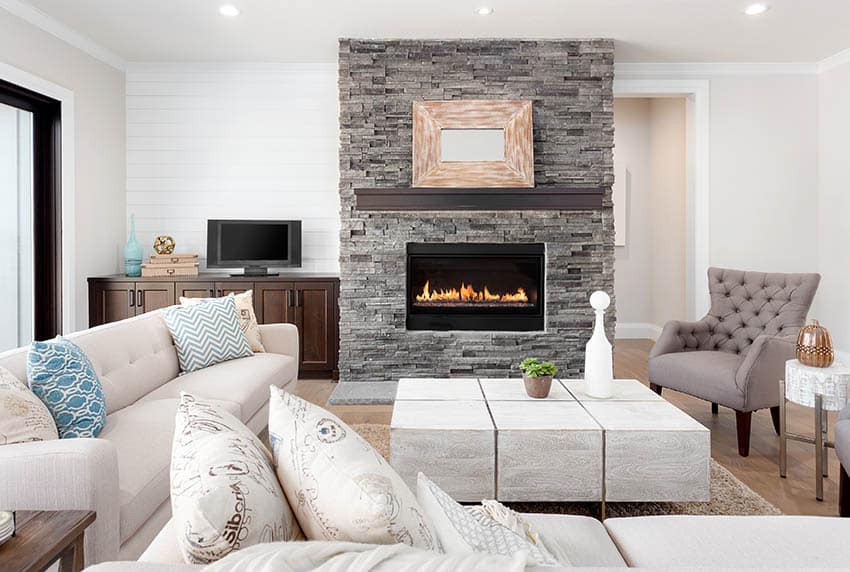
Gas fireplaces can be anywhere from 20 inches to 60 inches, but the size you choose will ultimately depend on the area of the room and the height of the wall you plan to put it in. For example, if you have a wall that is 8 feet or 96 inches tall, you wouldn’t put a 60 inch fireplace in it since it will be taking up most of the space.
Make sure to consider the room dimensions, scale and proportion when choosing the right size for fireplaces. But along with aesthetics, also keep in mind practical factors like the climate and the number of windows in the room to provide adequate heating in the space.
Standard Dimensions for the Main Parts of a Fireplace
Opening Width – 24 inches to 48 inches (sizes vary in increments of 4, meaning 24 inches, 28 inches, 32 inches and so on)
Opening Height – 24 inches, 29 inches, 32 inches
Firebox Depth – 16 inches, 18 inches
Rear Firebox Width – 11 inches, 15 inches 19 inches, 23 inches, 27 inches, 29 inches, 33 inches
Rear Firebox Wall Vertical Height – 14 inches, 16 inches
Typical Opening Dimensions of Fireplace
Sizes are in the format of (opening width x opening height x opening depth)
24 inches W x 24 inches H x 16 inches D
28 inches W x 24 inches H x 16 inches D
32 inches W x 29 inches H x 16 inches D
36 inches W x 29 inches H x 16 inches D
40 inches W x 29 inches H x 16 inches D
42 inches W x 32 inches H x 16 inches D
48 inches W x 32 inches H x 18 inches D
Typical Gas Insert Sizing
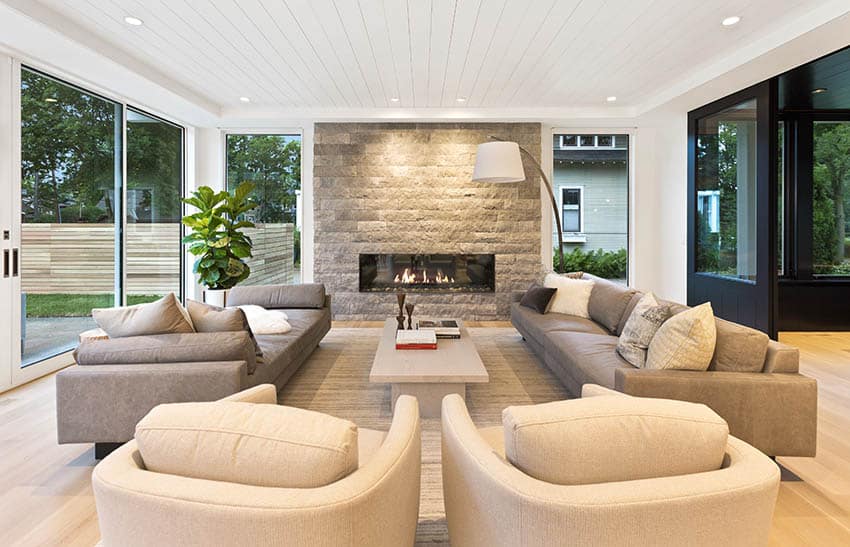
Choose the right size of gas insert that fits your fireplace’s opening. Below are the standard sizes of small, medium, and inserts. Sizes are in the format of (opening front width x height x depth)
Small gas insert – Approximately 26 inches width x 17 inches height x 14 inches depth
Medium gas insert – Approximately 29 inches width x 20 inches height x 14 inches depth
Large gas insert – Approximately 32 inches width x 24 inches height x 16 inches depth
Standard Size of Mantels
Most fireplaces, whether gas or wood burning, typically have openings that are nominally 36 inches or 42 inches wide.
Fireplace Installation Costs
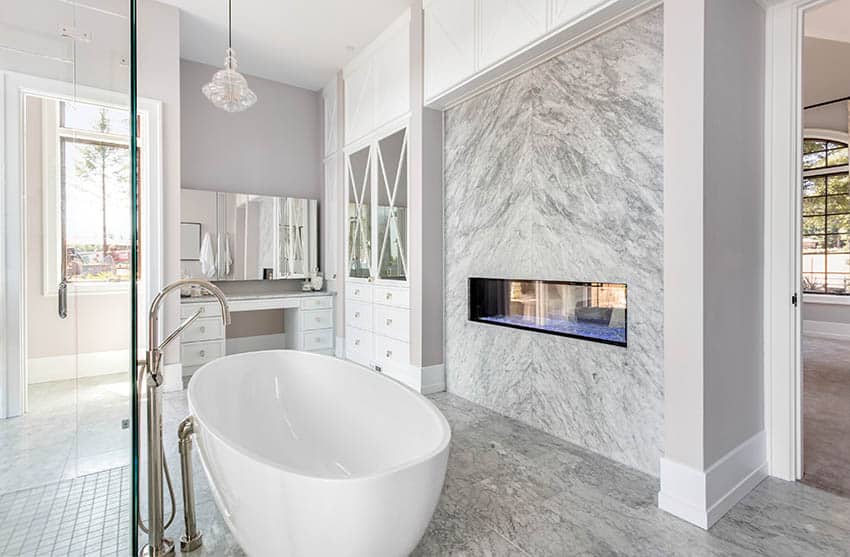
The price of fireplaces varies depending on their type. The cost of prefabricated models typically ranges from $1,000 to $8,000. Here are the typical costs of fireplaces depending on the type:
- Ventless gas fireplace: $2,000 to $3,500.
- Double-sided or multi-sided gas insert: $1,000 to $8,000.
- Two-sided ventless gas fireplace: $1,000 to $2,500.
- Gel-powered ventless, no gas fireplace: $300 to $700.
How Much Does It Cost to Install a Fireplace That Utilizes Gas?
The average installation cost is around $4500. Most projects run from $2300 to $10,000 depending on different factors like the design, style, ductwork and extra gas plumbing.
The type of gas fireplace also significantly affects the total costs. Before installation, you have to decide whether to choose a vented or a ventless fireplace.
The typical costs for installing a direct vent gas type run between $3500 and $7500, depending on the brand, appliance, and venting requirements. On the other hand, installing a ventless type usually costs between $200 to $3,500.
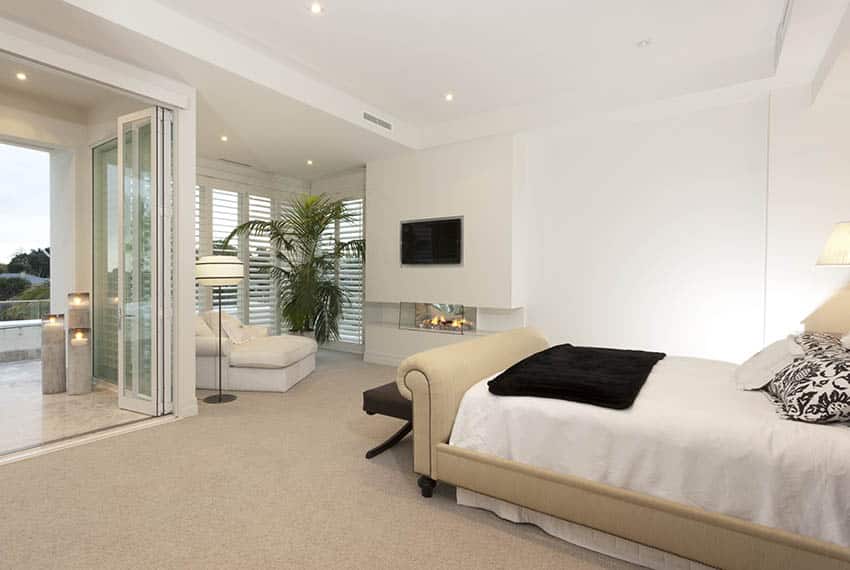
Labor Costs and Other Factors
The labor cost for installing a heating unit depends on a number of factors, but primarily, this is affected by the scope of work of the project. If your house does not have an existing line, the labor cost is greater because you need to install one. Direct vent models also have higher labor costs because they require a vent pipe to be installed. Using a built-in unit also costs more compared to inserts.
The average installation cost typically includes $750 for the vent pipe, $600 for the firebox installation and between $150 to $800 for the gas line (depending on the length). $2750 goes to the full installation and finishing work.
Cost of Gas Log Installation
The typical cost for gas log installation usually runs between $200 and $350. This usually requires a permit, which costs an extra $100 or less. Artificial or faux logs add around $100 to $400 to the cost of the installation, but some log sets may run up to $1000, depending on the brand.
Fireplace Insert Cost
The cost of gas inserts usually range from $3,000 to $6,000, excluding the installation. Double-sided or multi-sided inserts may run anywhere from $1200 to $8000, excluding the labor and installation.
Cost to Operate a Gas-Run Fireplace
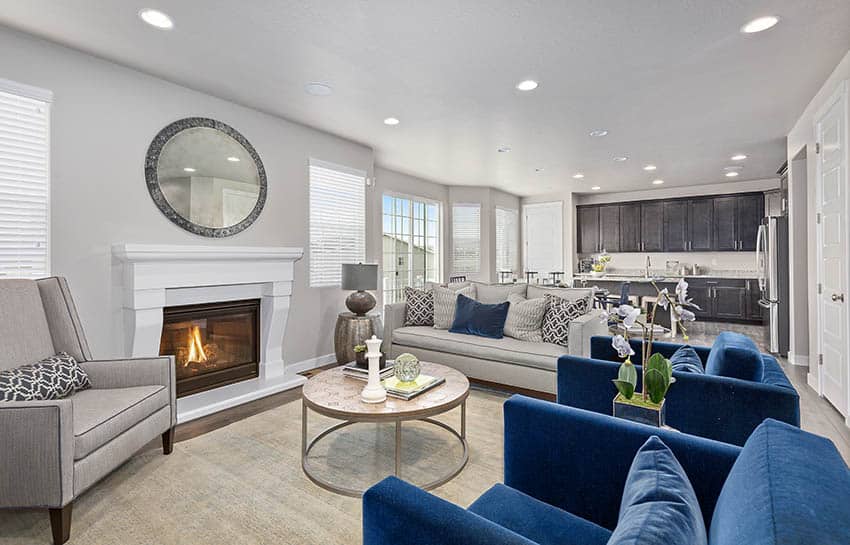
The cost to run a hearth also depends on several variables, such as the heating capabilities of your fireplace, the cost of propane and the cost of natural gas. The costs change considerably based on one’s location, the season, and current market conditions.
How do you calculate the cost per hour to run a gas fireplace? The energy consumption of fireplaces is measured in BTU or British Thermal Units.
One BTU is equivalent to the amount of energy required to raise the temperature of one pound of water by 1 degree Fahrenheit. The cost of gas is measured in “therm” units, which is the equivalent of 100,000 BTUs. The more BTUS it releases, the more it costs to run.
These fireplaces have a much larger range of BTU outputs compared to log fireplaces. They heat more effectively at about 10,000 to 70,000 BTUs.
To calculate the cost per hour of operating these fireplaces, you need to determine the (1) local cost of gas in therm units and (2) the fireplace’s fuel consumption in BTUs per hour. The latter information can be obtained from the label of the fireplace’s box and is also usually specified in the user’s manual.
To get the cost per hour, simply multiply the per therm cost of gas by the fireplace’s BTU rating. Divide the product by 100,000 and the resulting number is the per hour cost of running the fireplace.
For example, A fireplace that has a BTU rating of 20,000 with the cost of gas at 90 cents per therm will have an operating cost of 18 cents per hour. Using the formula (20,000 x 90) / 100,000.
Cost to Remove a Fireplace
If you need to take out a fireplace, the cost for removing it will typically run anywhere from $4,000 to $10,000.
Considerations When Installing Fireplaces in Your Home
There are different factors that you need to consider when installing a heating unit in your home. These things will not only help in the installation process go smoothly, but they will also ensure that you get the best of what your heating unit has to offer.
- Choose the best location for your fireplace. Where you place the hearth is very significant because a proper location will equate to maximum benefit. Take some time to plan the installation and select a location that is not only visually appealing but also equally practical. Choose a room where you and your family will benefit more from its warmth while also making sure that it is convenient for hooking up to an electrical line, for installing a line, and for creating ventilation through an exterior wall.
It’s typically on the ground floor and the central hub of the house where families spend most of their time, like the living room, family room, dining room, or kitchen.
The type of gas fireplace that you plan on installing will also help you determine the best location where you can put it. Direct vent fireplaces are recommended to be placed on an outside wall, while ventless or vent-free fireplaces can be placed practically anywhere.
If you are building a new house, consider your layout as it will affect your fireplace’s ability to provide heat all throughout your home. Make sure that your layout focuses on your fireplace, like an open design, where there are no partitions or walls to allow the heat to move freely.
- Ensure that your it is installed by a professional. Make sure that it is installed by a qualified technician. Some dealers offer full installation services, but you can also look for different independent contractors so you can get several estimates and have a basis for comparison.
- Secure the necessary permits for installation. In most areas, installing one will require a special permit before you can start. Aside from the permit, an initial inspection is also required.
- Before installation, check the manual that comes with your gas fireplace. We cannot stress enough how important it is to read the manual that comes with your fireplace. Check the manufacturer’s instructions on the requirements for installation — such as minimum clearances before adding a mantle or surround, ventilation, electrical lines, etc. After it is installed, you also have to read the manual before you operate your unit for the first time.
- Do a test fit of your gas fireplace. Before permanently installing it in your chosen location, test it out first and see if it meets the look you envisioned and the position requirements stated in the manual.
In some cases, specific models need to be elevated for safety. With such, you’ll need to construct or purchase a platform that will fit the heating unit model’s standards.
- Build the piping. Once the location is settled, start constructing the piping from the stove collar to the wall. Sketch a line on the wall around the piping so you can also locate the place where you will be cutting the ventilation hole. Secure the first piping with stove cement.
- Create ventilation. On the wall where you marked the place of your ventilation hole, draw the actual size of the hole that you need using the wall-pass-through component that comes with your unit. Make a shallow cut first to see if any wires or pipes may obstruct the space. Make sure that it is also placed between the wall studs.
Mark the exterior portion of the wall using a drill, then cut the ventilation hole from the outside. Frame the inside part of the cut-out using lumber.
- Start installing the piping and the pass-through. Using a high-temperature caulk, line the ventilation holes’ lumber frame and slide the pass-through component in place. Secure it with screws and connect the rest of the piping. Seal the pipe to the firestop using a high-temperature caulk. Then install the outside firestop and secure the drip cap.
- Hook up your unit to a gas line. Install the line with the help of a professional. If any electrical work is required, make sure to contact an electrician.
- Add the finishing touches. If you are planning on adding accessories like a mantel, surround or frame, install them. You can buy these accessories pre-made or you can build one yourself. These will make it look more attractive and realistic.
Before starting your gas fireplace:
- Do not operate your fireplace until the area where it is placed is cleaned. Ensure it is free from any dust that can harm its parts like the burners, motor and fan.
- Have it inspected before use.
- During operation, keep combustibles away and the hot surfaces.
- If the pilot light goes out, make sure to wait five minutes before relighting it.
- Make sure that it is thoroughly kept clean and free from any form of obstruction.
- Watch out for any unusual smells and flames. These could be signs that it is not working properly. In the event of such, make sure to contact a professional.
Gas-Operated Fireplace Maintenance
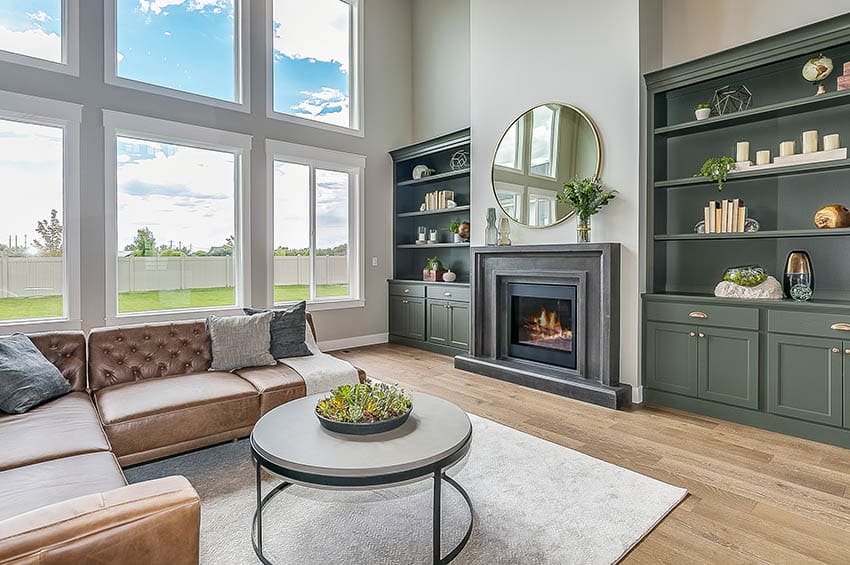
To ensure that your fireplace works properly and to keep it in its best condition, you’ll need routine maintenance and periodic servicing, along with proper installation.
No Daily Upkeep Required. Gas fireplaces require less maintenance compared to traditional wood-burning fireplaces. They do not need any day-to-day clean up. Unlike wood, it does not produce soot, debris, or ash even after being operated for a long time.
This is also one of the primary reasons for the rising preference of homeowners for this type of fireplace. There is no hassle involved in its maintenance — no messy work like getting your hands dirty or blackened and no bending over to collect ashes and debris.
Servicing and Annual Inspection. While there may be no day-to-day cleaning involved in keeping a fireplace, there are still a few periodic maintenance procedures needed to ensure its top performance.
Annual Safety Check and Inspections – These fireplaces need to be serviced by a professional once a year to inspect their parts like the fan, burner, venting, thermostat, pilot glass, and other accessories.
During annual servicing, the glass and decorative pieces also get cleaned by the technician. The cleaning process also involves removing any build-up like pet hair or dust using a vacuum or a soft-bristled brush.
Also, anything flammable needs to be assessed yearly to ensure safety. During the inspection, the area will be checked for any leaks like carbon monoxide, which is extremely harmful. They will also examine if it vents out properly through the chimney and that there are no obstructions. Read more about the types of chimneys here.
The entire process of inspections for fireplaces usually takes less than an hour. A routine check-up is very important because it keeps your heating unit in its best condition.
In addition, these fireplaces can show signs of wear and tear over time. Parts like connectors or valves may eventually malfunction, so an up-to-date inspection is really needed to keep it up and running perfectly.
How to Clean Your Gas-Controlled Living Room Fireplace
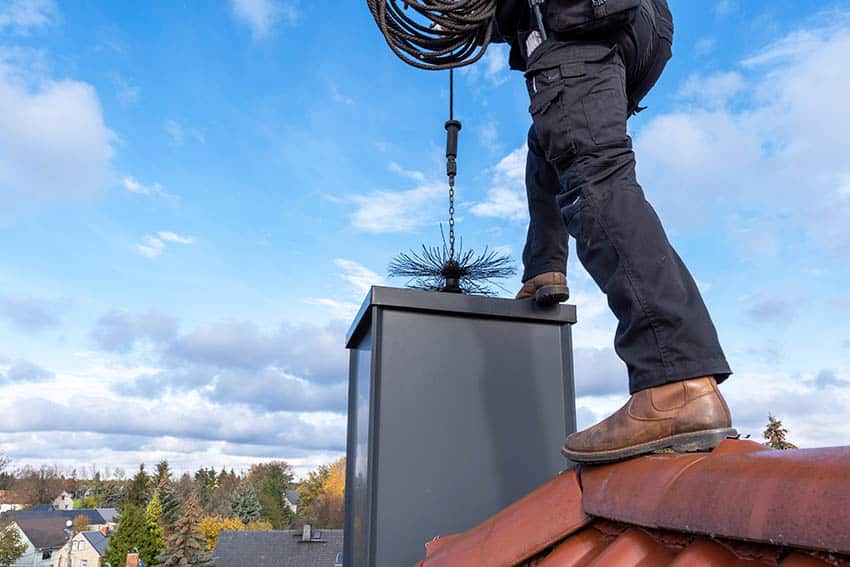
If you plan on cleaning your fireplace, here are some things that you need to consider to make sure that everything goes smoothly. Below are some tips on how to clean your fireplace:
- Check the manual first. Take some time to read the manual to make sure that you follow the steps correctly before doing anything.
- Turn off the gas before doing anything. Make sure that your stove is turned off before starting. Remember, safety first!
- Use a handheld vacuum to clean your fireplace. Carefully glide your vacuum around the logs, lava rocks, the front, and the surrounds to remove any dust buildup.
- If your hearth has lava rocks or, make sure to check them from time to time. Examine them for any sign of breakage, damage, or wear and tear. Replace them if needed.
- Keep an eye out for the surrounding walls and ceiling of your fireplace. Check the surrounding walls for damp patches, white stains, cracked paint, damaged mortar joints, crumbling bricks, or peeling wallpaper. If you have a chimney, examine it for are any stains on it. These damages are common indications that something is not working correctly with your chimney. It could be a sign of corrosive condensation or potential carbon monoxide build-up. If you see any of these, make sure to contact a professional and schedule a safety check.
- Hire a professional. Maintenance is best left to the pros. Not only will it make the process much easier, but it can also thoroughly inspect and clean your fireplace and chimney to ensure your safety.
Fireplace Q & A
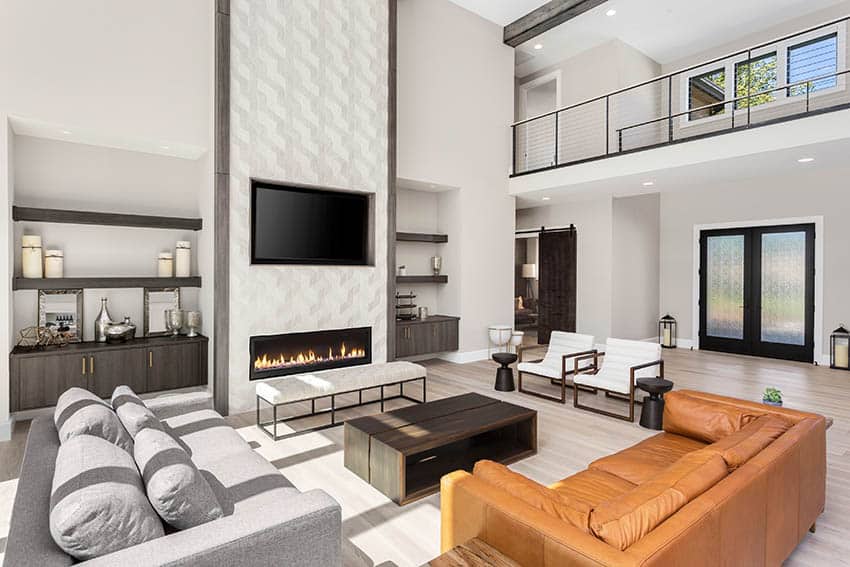
Here are some of the answers to the most common questions about gas fireplaces:
Which Type of Fireplace Is Best?
The answer to this question really depends on what you are looking for. Each type has its own strengths, which make it better than the rest. Deciding on which is best varies depending on different factors like efficiency, convenience, ease of use, cost, aesthetics, and ambiance.
- Best Ambiance: Wood Burning Fireplace. Nothing beats the cozy ambiance and natural warmth that a wood-burning type brings. Curling up by wood-burning fireplaces is truly relaxing — you can hear the crackling sound of burning wood as you stare at the bright orange flames.
Although they have an edge over its electric and gas-burning counterparts in terms of beauty, it fall short in a few other factors, such as efficiency and upkeep. Wood-burning fireplaces require a chimney and demand more frequent regular cleaning.
- Easiest to Install: Electric Fireplace. In terms of ease of installation, electric fireplaces offer ultimate ease. You do not need a chimney or venting and no line is required. All you need is a wall outlet. Simply set it in a wall and plug it in an outlet, turn on the switch, and you’re all set.
- Easiest to maintain: Electric Fireplaces. Electric fireplaces are the clear winner when it comes to the level of maintenance needed to keep them in their top shape. Electric fireplaces require no maintenance at all. You do not need to worry about constant cleaning or refueling that comes together with a wood burning fireplace. No debris or embers were produced.
Electric fireplaces also require far less rigorous annual inspections. Unlike gas fireplaces, which need to be inspected by a professional once a year, electric-powered ones can be inspected by the homeowner to ensure that everything is still working properly.
The only annual maintenance that electric fireplaces need is the replacement of the bulbs, an inspection of the exterior and cleaning of the fan.
- Most efficient: Gas Fireplace. Gas fireplaces are considered to be 70% energy efficient — a rating much higher than the 15 percent efficiency of a wood-burning one.
- Best heat output: Gas or Wood Burning Fireplace. If you are looking for a heating unit that will give you maximum heat and warmth, you can go for either a wood-burning or gas fireplace. An electric model cannot match the heat output that you get from the two.
- Most affordable: Electric Fireplace. Electric fireplaces offer the most price flexibility and are cheaper than gas and wood-brain fireplaces. You can find cheap electric fireplaces for as low as $100 — a perfect choice if you work with a limited budget. Whether your budget is big or small, you will surely find an electric model that will suit it. Not only is it the winner in terms of initial costs, it will also save you a lot in terms of installation and maintenance costs.
- Easiest to use. Electric Fireplace. Electric fireplaces offer you the ultimate ease and convenience. With just a simple touch of a button, you can start a fire and even set it to a desired temperature, as opposed to a wood-burning fireplace, which would involve more steps to set up, like putting the logs, lighting the fire, and keeping the wood burning. Read more about gas vs electric fireplaces here.
How to Use the Pilot Light for the Fireplace
The method that you use to light a fireplace will depend on the type of pilot light it uses — whether it is electronic or flame-lit. The instructions for this can be found on the user manual that comes with your fireplace and the process is not that complicated.
We will outline the steps for you below, but first, you have to familiarize yourself with what a pilot light is.
Gas fireplaces use a small flame that helps ignite the fire — this is called a pilot light. The pilot light is typically located at the bottom of your fireplace — behind a panel that can be removed.
The pilot light can be turned off if the unit is not in use, so you can conserve gas and save money.
Regardless of the type of pilot light, you have to use the same precautionary steps. First, check for any debris or obstructions and remove them to prevent them from getting in your way. You can use a flashlight so you can get a better view of your pilot light.
If your fireplace uses an electronic pilot light, turn on the supply line to the fireplace. Set your desired temperature on the “electronic” setting (the setting which controls the temperature of the unit) and make sure that the electric switch is on.
Look for a control knob that is labeled “pilot ignite” or “ign” and turn the knob to this position. You may have to push down lightly to get it to turn, and hold it down for a few seconds to release gas. Next, push the “ignitor” button.
When you hear a clicking sound, it means that sparks are produced to ignite the gas. Release the ignitor button while continuing to press the “pilot ignite” control.
If it doesn’t light, wait for 10 seconds. Then push the ignitor button again while simultaneously pushing the “pilot ignite” button and release them once the pilot light is lit. Turn the knob to “on ” if you want the pilot light on continuously, while if you want to adjust the temperature, turn the knob to “electronic” setting.
If it has a flame-lit pilot light, turn on the supply line in the fireplace. Then, carefully light a matchstick or a butane candle lighter, hold it near the burner of the fireplace. Turn the key or knob to release gas to the burner.
Once the pilot lights light, pull the match or butane candle lighter away. If you want to adjust the flame height, you can do so by turning the key. This process is very much similar to operating a gas burner or stove.
Material to Put in the Fireplace Bottom
The material placed at the bottom of a fireplace also greatly depends on the type of fireplace you have.
For vented natural fireplaces that use log sets, silica sand is used in the bottom of the burn pan. The sand helps the gas to disperse evenly throughout the burner pan and spreads it around before it is ignited.
If the gas is dispersed, then there will be more flame action in the logs. The silica sand needs to be replaced every few years to keep the flames burning.
If you have a propane fireplace, it is not recommended that you put silica sand at the bottom of your fireplace because this will be too heavy for the propane.
How Many Hours Can You Run a Gas-Powered Home Fireplace?
The recommended duration of running your fireplace will also depend on what type you have. A fully-vented heating unit with sealed glass fronts can be left running continuously.
If everything is working properly, there are no leaks and malfunctions, it is safe to keep it running for hours, provided that it is supplied with sufficient gas.
On the other hand, a vent-free unit that is equipped with front doors that can be opened should only be operated for a maximum of three hours at a time. Since it is not fully sealed, it should not be left running continuously as it can be dangerous.
Is a Chimney Needed?
Most ventless fireplaces do not require a chimney for exhaust. Direct vent fireplaces also do not need a chimney as they can be vented directly through the wall to the outdoors and can be placed anywhere in a house.
However, some fireplaces with log sets may require an existing chimney system to expel the heat generated from burning. The chimney that log sets require must be properly maintained and code-compliant.
What If the Fireplace Emits an Odor?
A smell or odor may indicate an underlying problem with the unit. An improperly maintained fire-heating equipment can pose a lot of dangers such as carbon monoxide, toxic gas which are very harmful to one’s health.
It can also result in incomplete combustion and malfunction. If you smell gas, there may be a leak somewhere in your system and this had to be addressed immediately by a professional.
How can you confirm if there is a leak for sure? The first obvious sign is the smell of sulfur or rotten eggs coming from your fireplace. There can also be a whistling or hissing sound near the gas line.
In some cases, a dust cloud, which is white in color, also forms. If the pipe is also damaged, houseplants inside your home start to die and wither.
In the event of a gas smell, it is best to call a professional so they can thoroughly check your system and trace the issue. After your it has been repaired, allow some time for the odors to clear out in your room.
How to Turn Off Vented-Type Furnaces
Whether your fireside has a knob or key control, turning it off is very easy. Fireplaces typically have knob controls that have “on”, “off,” and “pilot” settings. You just have to turn the control knob to the “off” position and wait for at least 5 minutes. Also, make sure that the emergency valve is closed as well.
For gas fireplaces that have “key controls”, simply insert the key in the slot or keyhole and turn it clockwise until the supply is cut off, the valve is closed, and the flame is extinguished.
Can You Burn Wood in Vented Fireplaces?
The answer is NO because these fireplaces are not designed to burn wood. It does not have the same firebox, flue, and type of ventilation that wood-burning fireplaces have. It is also not designed to handle the smoke, soot, and ashes that come from burning wood.
Burning real wood in a gas fireplace could be a fire hazard and a safety issue. If you also burn wood on a fireplace, your house can be filled with smoke.
Fireplace Ideas
Aside from technical aspects like installation, venting, and maintenance, another factor that you have to consider in planning is the fireside design. Luckily, a wide range of designs and ideas lend a strong impact to a space. Below are some of the best hearth ideas that you can try out for your home.
Add Tempered Glass Fronts
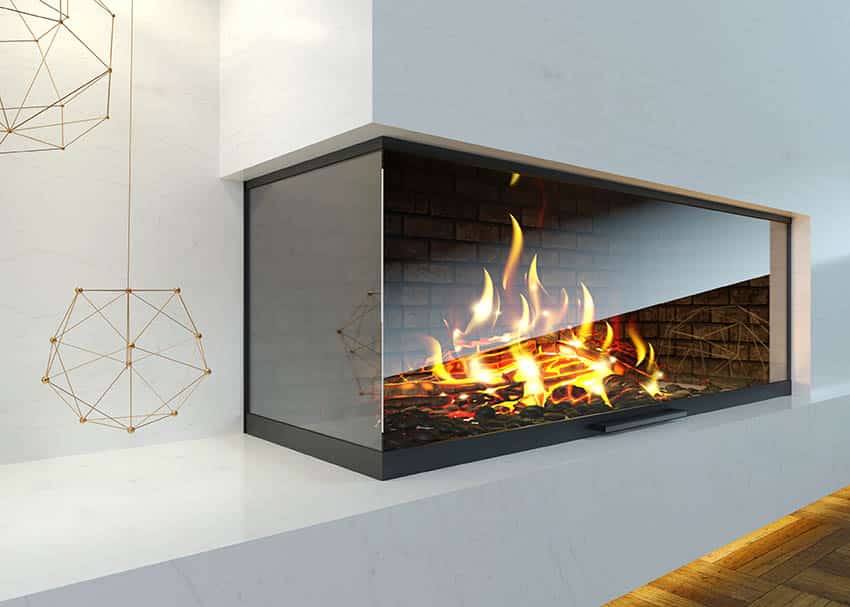
Glass fireplaces have tempered glass fronts. Unlike ordinary glass, tempered glass is tumbled and polished to create little pebbles, which make it highly resistant to heat. Tempered glass will not melt, explode, or burn even when subjected to very high heat, soot, or smoke. It is also resistant to discoloration when exposed to natural gas.
Because of their stylish, streamlined, and minimalist aesthetic, glass fireplaces are more commonly used in modern and contemporary interiors. Aside from their stunning appearance, they are also very efficient and safe to use. One of the best benefits of having glass-fronted fireplaces is that they keep the room safe from fumes. Because it is airtight and sealed, combustion and any debris stay inside the fireplace.
Opt for a Freestanding Fireplace
As its name suggests, a freestanding fireplace is a stand alone unit that does not have to be built into a wall. Unlike traditional fireplaces which are permanently fixed to a specific location, a freestanding hearth offers more flexibility as it can be used anywhere.
Sometimes referred to as a “freestanding gas stove”, these units offer the warmth of fireplaces, the installation flexibility of a stand-alone stove, and the convenience and efficiency of gas — all into one.
They are practically maintenance-free and very easy to install — in fact, they require no construction at all. Most freestanding fireplaces can be vented through an existing chimney, through the roof or out of the wall using a direct vent.
They can be set near a wall or put in a corner, depending on the homeowner’s preference. Because of its exposed sides, the amount of heat generated in a space is more amplified. The cost of freestanding fireplaces typically ranges from $100 for a simple stove to $2,000 for more advanced models.
Place a Fireplace in a Corner
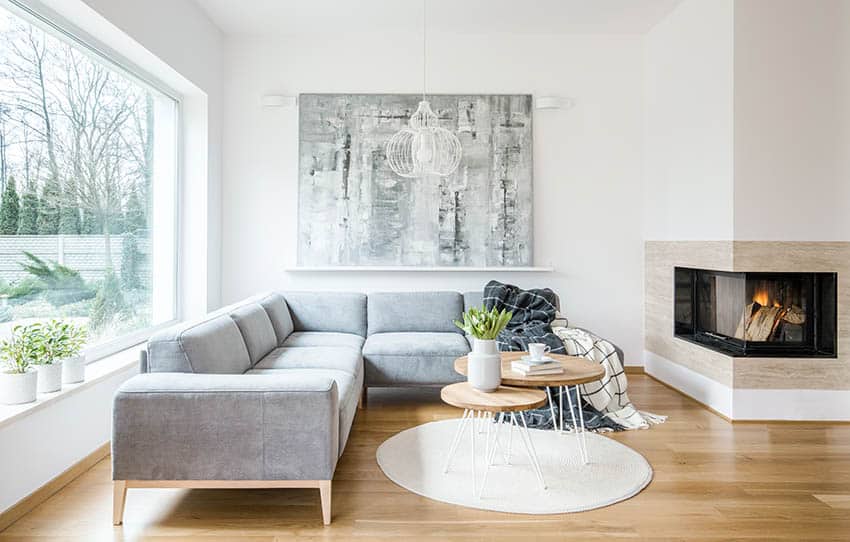
As its name suggests, corner fireplaces are small units that can be tucked neatly in a corner. Corner fireplaces are the perfect choice for those living in condominiums, pads or studios where space is often limited. Because of its compact size, it can comfortably fit in any vacant corner, unlike traditional built-in fireplaces that take up a lot of wall and floor space.
Corner fireplaces also work well in large spaces, especially if you want to leave more wall space open for decor or other furniture pieces. Alternatively, you can also use it to fill out an empty space or as a subdivider for a big room. In addition, it can be used to anchor a room’s look or balance its architecture.
Choose a Smaller Fireplace
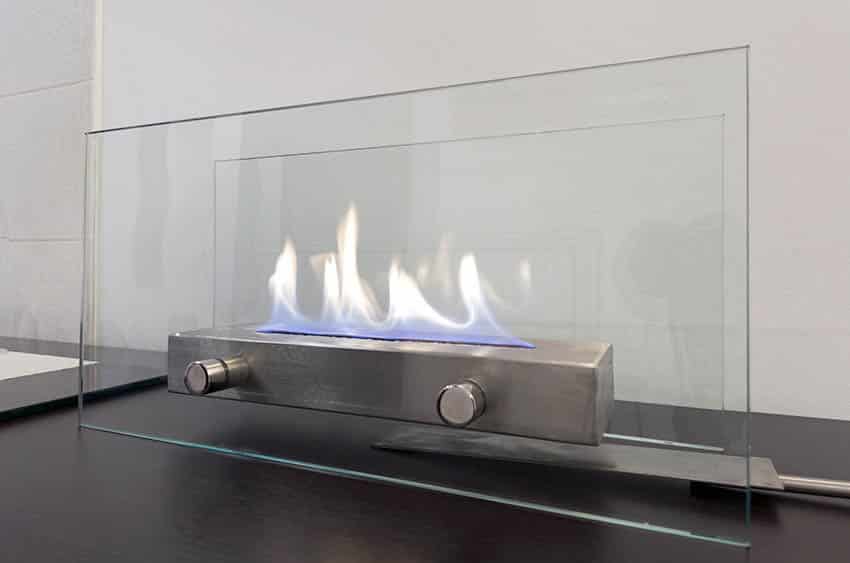
In homes where space is at a premium, a standard-sized built-in hearth may not be a practical option. Fortunately, there are a lot of small fireplaces available on the market, which are ideal for studios, condominiums, and small apartments.
If constructing a built-in, one of the best designs for small fireplaces is a corner fireplace, but there are other ready-made options that you can avail yourself of, like compact freestanding fireplaces and wall mounts.
When designing built-in small fireplaces, just make sure that you follow the recommended standards to make them efficient for use. The smallest dimension should at least be 24 inches for the opening and 16 inches for the firebox depth.
Modern Fireplace Designs
Modern fireplaces have a more minimalist aesthetic. Their design is simpler, more streamlined, has sharper lines, and most of the time, industrial-looking. Modern fireplaces are typically made of glass, stone, concrete, or metal. The color is neutral-toned – usually gray, black, white, or brown.
There are several accessories that are typically used in modern fireplaces, which completes their updated look. Examples of these enhancements are glowing faux embers, blue, green, red, and yellow fire glass, charred wood style ceramic fiber logs set and colored fire stones, a bed of coal or birch ceramic log sets.
Contemporary Style Fireplaces
Contemporary fireplaces are a bit similar to modern fireplaces in the sense that they both have simple designs and a more streamlined and linear form. Inspired by European design, these fireplaces typically feature linear flames that flicker in unison and panoramic viewing angles.
The materials they use are usually stone, concrete, and metal, but sometimes unique materials like black onyx are also used. Most homeowners use contemporary-style firesides as a focal point in a space, often positioned at eye level– much like a dynamic piece of artwork.
Consider Having a Linear Fireplace
A linear fireplace is a rectangular-shaped heating unit that can be used both indoors and outdoors. These usually feature one to two rows of flames in a display of fire glass.
A long shallow burner tube produces this mesmerizing row of flames that are 2 to 12 inches tall. The height of the flames depends on the fireplace’s model.
Linear fireplaces can be installed flush inside a wall and are usually mounted at eye level for the most impact. Their shape and aesthetic make them highly suitable for contemporary and modern interior settings.
The average cost of linear fireplaces typically ranges from $2,200 to $4,000, depending on the style.
Include a Wall Mounted Fireplace
Wall-mounted fireplaces are designed for surface mounting in a wall. They expel heat out at the top or the bottom of the unit.
Place a Double Sided Fireplace on an Accent Wall
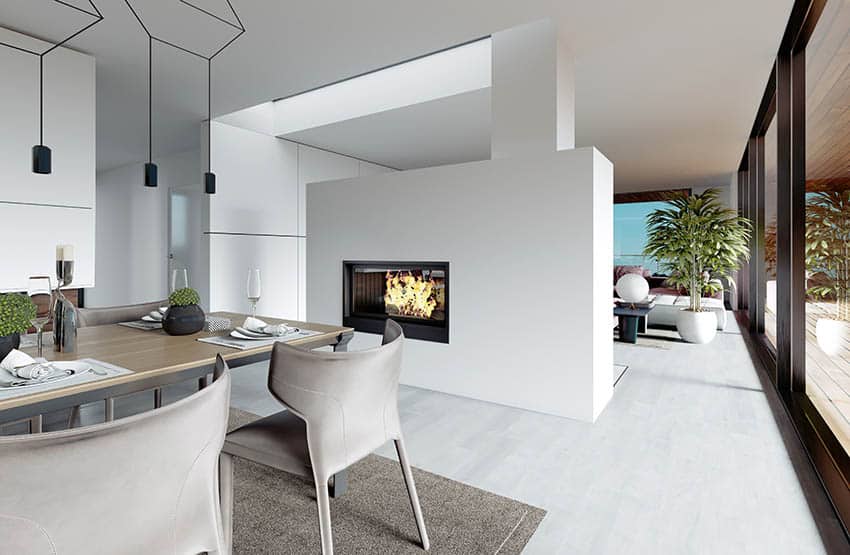
Double-sided fireplaces can be viewed from 2 sides. Unlike a traditional hearth placed against one wall and only displays the front, double-sided fireplaces can be used as a partition in an open plan or a focal feature in the middle of a room. These designs are usually made with thick tempered glass enclosures.
Double-sided firesides offer double the warmth, however, they also require double the space a standard hearth needs. Because of this, they work best in open settings and very large spaces.
Often contemporary in style, double-sided fireplaces are magnificent designer features that can certainly add a “wow factor” to a room. They offer a great way to break up a space while maintaining light flow between two areas.
Double-sided fireplaces provide a more even distribution of heat in two spaces, unlike in a traditional hearth where the heat can cluster up. Double-sided fire heating inserts typically cost anywhere from $1,000 to $8,000, not including labor or installation. Two-sided ventless fireplaces are less expensive and run around $1,000 to $2,500.
Install a TV Above the Fireplace
Because television sets nowadays are more lightweight and flat, they can be easily placed anywhere in a home, and one of the most common locations is above a fireplace.
Hanging a flat-screen above a mantel serves a dual purpose – it converts it to an entertainment center while also serving as the room’s centerpiece. This setup is very useful if you want to free up floor space for more furniture.
If you are considering mounting a TV above your mantle shelf, make sure to follow the installation instructions. A few challenges line the high temperature from the fire, wire management, the right viewing angle, and a secure mounting technique must all be planned out well before trying out this configuration.
Make sure to read your TV’s technical specifications to make sure that it does not exceed the recommended temperature. Too much heat coming from a hearth can affect your TV’s lifespan and may eventually break it, so test out the surface temperature first.
Also, invest in a secure mounting mechanism to make sure that your TV does not fall off. There are a number of mounting methods and systems that you can try out, but make sure to opt for the one suited for your TV’s weight and size. In addition, consider hiding the wires as they can distract from your hearth and TV’s design.
Add a Peninsula Fireplace
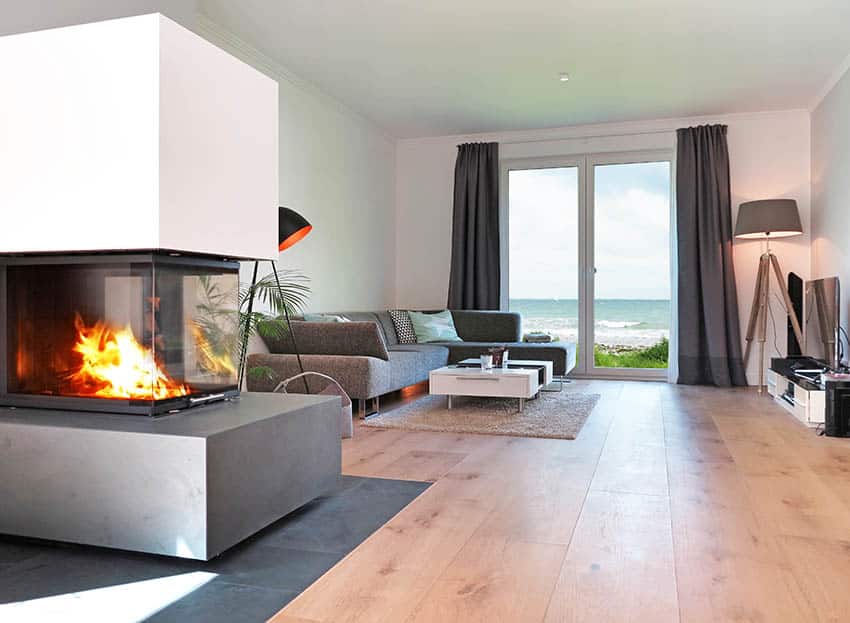
Sometimes referred to as a peninsula fireplace, 3-sided fireplaces can be viewed from the front, back, and one side. This design is usually used to elegantly divide a space.
Three-sided fireplaces are very modern and unique. Their design is typically made of frameless glass and features robust flames. Most of these models include friendly controls that enable you to adjust the heat output and the flame height.
Three-sided fireplaces are quite expensive, with units starting at $4000. The prices go higher depending on the material and design of the unit.
Replace Your Old Fireplace with Stone Fireplace
Stone is one of the most popular finishing materials used in firepits. Not only does it offer a classic and rustic look, it is also very durable and reliable.
There are several types of stone fireplaces — from natural stones like marble, granite, slate and limestone to engineered materials like Cambria and Neolith.
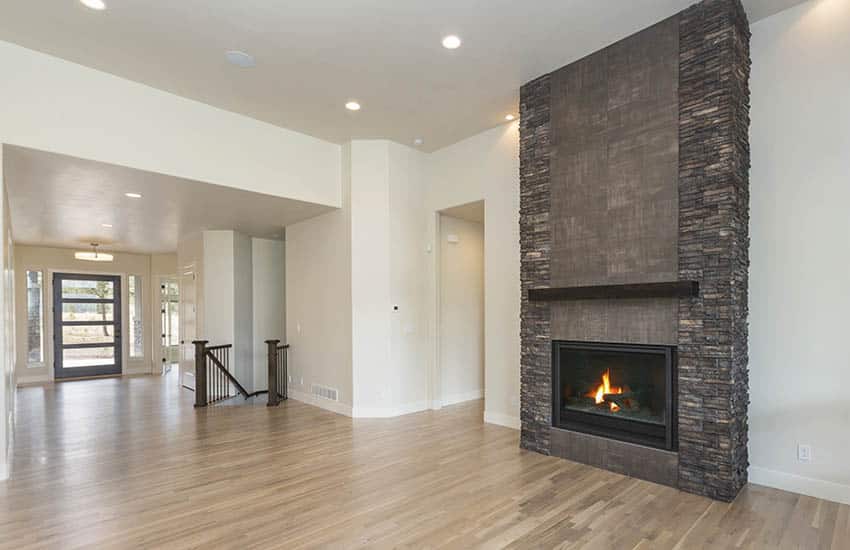
Granite is one of the sturdiest natural stones that can be used for a stone fire pit. Because it is formed beneath the earth’s surface by extreme heat, it develops a resistance to it — making it very suitable for use in fireplaces. It will not get damaged from the heat coming from it, even for a long period of time.
In addition to this remarkable trait, granite is also low maintenance and resistant to wear and tear and abrasion, thus making it also the perfect choice for a fire pit surround. It will not get stained from any debris that may come from a fire pit. All you need is a cloth, some soap, and water to clean it.
Marble is another popular choice for stone fireplaces. Known as the most prestigious natural stone in the market, marble can offer a tasteful, refined, and luxurious look to a firebox.
In addition to its refined natural beauty and heat resistance, marble is also durable. Similar to the way granite is formed, marble is produced when limestone is subjected to enormous amounts of heat and extreme pressure.
This metamorphic process makes it naturally resistant to heat and suitable for use in applications constantly exposed to high temperatures, such as a firepit.
Limestone is another quintessential choice for a stone heating system. Considered to be the mother stone of marble, onyx, and travertine, marble boasts of an old-world charm and a soft and natural aesthetic that can lend a strong, cozy, inviting feel to a home.
Limestone works well for fireplaces because of its durability. Although naturally porous, limestone is ideal for fireplaces because in this type of application, it will not be exposed to liquid and moisture.
It is highly versatile and can be customized for different designs and styles. To top it all off, limestone is also very cost-effective.
Cambria Quartz is a type of engineered stone that is highly reliable for use in fireplaces. Cambria quartz is made of 93% natural quartz-one of the hardest minerals on Earth, mixed with 7% resin binders.
So basically, it levels up the natural strength of the most durable material on earth, making it even more sturdy and durable. In fact, Cambria quartz has a rating of 7 in the Mohs scale, which is higher than granite and marble.
If you are looking for a long-lasting material for your stone hearth, Cambria quartz is one of the best choices because it does not scratch, crack, or chip. It is also heat resistant, and whatever fuel you use, it won’t discolor or fade due to the ambient heat of fireplaces.
Lastly, Cambria surfaces are maintenance-free. Unlike natural stones, which need to be periodically sealed and reconditioned, it does not need any special treatment. Cleaning it is also relatively easy and requires no more than a soft cloth, some warm water, and soap.
Neolith Sintered Compact Surfaces is another type of engineered stone that can be used for fireplaces. Developed in Spain by the company The Size, Neolith combines the best natural materials with state-of-the-art technology to create the most durable slabs in the market.
To produce their product, 100% natural materials such as quartz, feldspar, glass, silica, and natural oxides are subjected to high temperatures and pressures, resulting in remarkable qualities.
Neolith slabs are very durable and heat-proof, which makes them an excellent choice for stone fireplaces.
The three main groups of elements that compose it give it extreme durability — minerals from granite give it hardness and strength, minerals from glass and silica offer stability, and natural oxides provide chromatic properties.
These slabs are stain-resistant, scratch-resistant, chemical-resistant, and UV-resistant. It can stand up to harsh chemicals, can withstand wear and tear, and require little to no maintenance.
Neolith’s Sintered Compact Surfaces are also lightweight, weighing only 3.5 lbs per square foot with a 6mm thickness and 7 lbs per square foot with a thickness of 12mm.
Since the material is not bulky, it can also be used as a finishing material for surrounds. It can be easily attached to a wall and won’t add a great deal of load to the existing weight of the surface.
Put Your Fireplace on the Patio
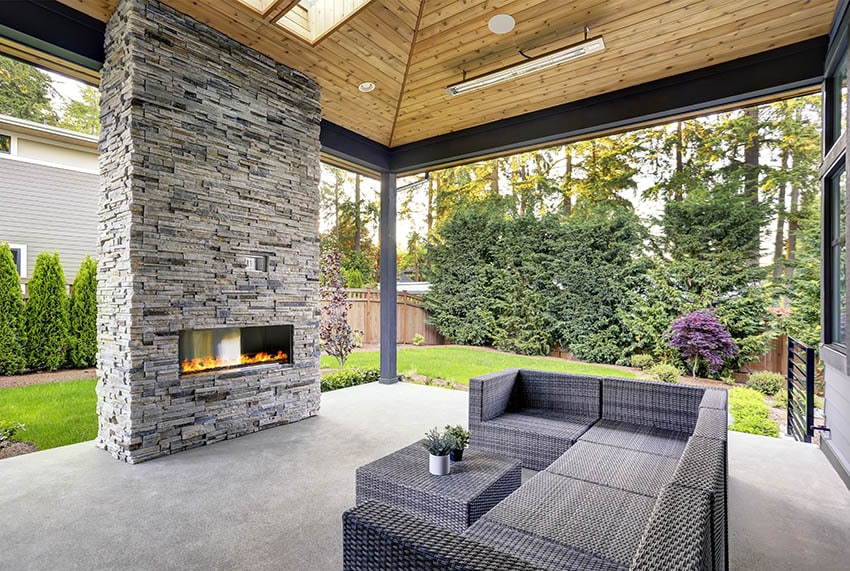
The patio is one of the best places to put a hearth because it can benefit from the warmth and radiating heat during cold seasons. Designed for outdoor use, patio fireplaces may be bought freestanding as premade kits or custom-built like a fire pit by a contractor.
They come in a variety of designs, which are readily available online and in local home improvement stores. One of its most popular designs is the firepit table, which is essentially a small center table that has a fire pit in the middle.
Most homeowners prefer patio fireplaces because they are easy to use and install, and they provide efficient local heating. They are also very affordable with prices starting at $100 for outdoor kits for fireplaces.
See more outdoor fireplace ideas on this page.

